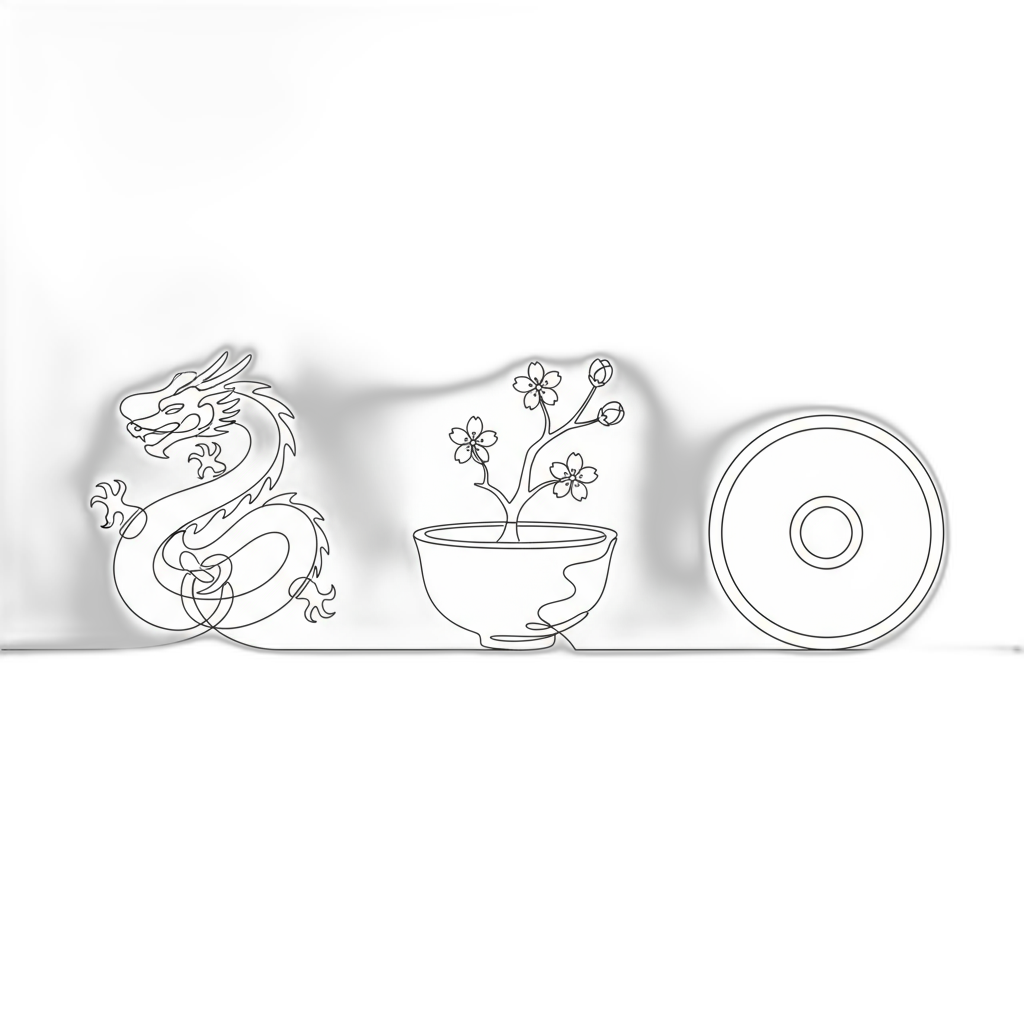Thank you! Your submission has been received!
Oops! Something went wrong while submitting the form.

Nationwide Service
Onsite or Online
USPAP-Compliant
IRS Qualified
DEFENSIBLE, USPAP-COMPLIANT APPRAISAL REPORTS — ACCEPTED BY 10,000+ ORGANIZATIONS






5-Star Service, Trusted & Loved by Hundreds
{{pricingSubheader}}
This is some text inside of a div block.
This is some text inside of a div block.
Starts at
This is some text inside of a div block.
This is some text inside of a div block.
This is some text inside of a div block.
Starts at
This is some text inside of a div block.
{{feeRangeHeader}}
This is some text inside of a div block.
Most Household Goods engagements fall within this range. Larger or unusually complex collections may require a custom quote.
{{pricingByHeader}}
{{pricingBySubheader}}
This is some text inside of a div block.
This is some text inside of a div block.
This is some text inside of a div block.
What Drives Cost?
Number of items to be appraised
Number of items to be appraised
Number of items to be appraised
How the Process Works
1
Appraisal Request
Submit estimate or list of items for our review
2
Quote Issued
We'll share a flat fee quote for your approval
3
Kickoff & Intake
Submit details on all of your items for our review
4
Research & Analysis
We'll conduct detailed research and prepare a written USPAP-compliant report
5
Report Delivery
Delivery of your report and supporting documents (e.g., signed IRS Form 8283) by email
Your Appraiser Search Ends Here
Your Appraiser Search Ends Here
.avif)

Nationwide Coverage – Appraisals Anywhere in the US
Our extensive network of professional appraisers ensures you receive accurate, trusted valuations wherever you are.

Get it done Onsite or Online
Choose between a seamless online process—preferred by most clients—or in-person service for complex assignments.

Any Asset, Covered
Nationwide appraisers for every asset— from buildings & businesses to vehicles & valuables.

Defensible for Any Purpose
For donations, estates, insurance, and more—our USPAP-compliant reports are built to meet the highest standards.
No items found.
An Asian art appraisal is a comprehensive professional evaluation of artworks originating from across the Asian continent, encompassing diverse regions such as China, Japan, Korea, India, and beyond. This specialized assessment delves deep into the artwork's critical attributes, including its fair market value, historical authenticity, cultural significance, and overall physical condition. The process provides art owners with essential insights that go far beyond a simple monetary valuation, offering a nuanced understanding of the piece's artistic and cultural context.
The complexity of Asian art appraisal requires exceptional expertise, as each piece represents a unique intersection of artistic tradition, historical craftsmanship, and cultural heritage. Professional appraisers meticulously examine every aspect of the artwork, from its materials and technique to its provenance and historical significance. They consider multiple factors that influence value, including the artist's reputation, the artwork's age, condition, rarity, and current market trends in the specialized world of Asian art collecting.
Collectors and owners seek these detailed evaluations for various critical purposes, ranging from insurance documentation and estate planning to academic research and personal collection management. The appraisal serves as an authoritative document that captures the artwork's intrinsic and market value, providing a comprehensive snapshot of its cultural and financial worth at a specific point in time.
Precision and deep cultural knowledge are paramount in this specialized field, requiring appraisers to possess not just technical expertise, but also a profound understanding of Asian artistic traditions, historical contexts, and contemporary art market dynamics. Each appraisal represents a careful blend of scholarly research, visual analysis, and market intelligence, ensuring a comprehensive and accurate assessment of the artwork's true value and significance.
The complexity of Asian art appraisal requires exceptional expertise, as each piece represents a unique intersection of artistic tradition, historical craftsmanship, and cultural heritage. Professional appraisers meticulously examine every aspect of the artwork, from its materials and technique to its provenance and historical significance. They consider multiple factors that influence value, including the artist's reputation, the artwork's age, condition, rarity, and current market trends in the specialized world of Asian art collecting.
Collectors and owners seek these detailed evaluations for various critical purposes, ranging from insurance documentation and estate planning to academic research and personal collection management. The appraisal serves as an authoritative document that captures the artwork's intrinsic and market value, providing a comprehensive snapshot of its cultural and financial worth at a specific point in time.
Precision and deep cultural knowledge are paramount in this specialized field, requiring appraisers to possess not just technical expertise, but also a profound understanding of Asian artistic traditions, historical contexts, and contemporary art market dynamics. Each appraisal represents a careful blend of scholarly research, visual analysis, and market intelligence, ensuring a comprehensive and accurate assessment of the artwork's true value and significance.
The field of Asian art appraisal encompasses specialized professionals who bring deep expertise to evaluating cultural artifacts from diverse regions. These appraisers are distinguished by their nuanced understanding of specific artistic traditions, historical contexts, and regional aesthetic developments.
Chinese art appraisers represent one critical category, possessing intricate knowledge of traditional paintings, ceramics, jade works, calligraphy, and bronze artifacts. Their expertise requires comprehensive understanding of dynastic periods and the subtle characteristics that distinguish authentic pieces from reproductions.
Japanese art specialists focus on unique artistic expressions including woodblock prints, pottery, textiles, and contemporary works. Their assessments integrate profound insights into artistic periods like Edo and Meiji, coupled with sophisticated comprehension of market dynamics that influence artistic valuation.
Indian art appraisers navigate an extraordinarily complex landscape, evaluating artifacts ranging from ancient sculptures to modern artistic innovations. Their approach demands comprehensive understanding of regional artistic styles, religious influences, and the nuanced cultural narratives embedded within artistic expressions.
Southeast Asian art experts specialize in artworks from countries including Thailand, Indonesia, and the Philippines. Their appraisal skills revolve around understanding deeply rooted cultural motifs, traditional craftsmanship, and the symbolic significance of artifacts like textiles, masks, and wood carvings.
Korean art appraisers bring specialized knowledge of traditional and contemporary Korean artistic production. Their expertise encompasses ceramic traditions, painting techniques, and an understanding of how historical and cultural shifts manifest within artistic creations.
These specialized professionals collectively represent a sophisticated network of experts who preserve and authenticate the rich, complex heritage of Asian artistic traditions through meticulous, culturally informed evaluation processes.
Chinese art appraisers represent one critical category, possessing intricate knowledge of traditional paintings, ceramics, jade works, calligraphy, and bronze artifacts. Their expertise requires comprehensive understanding of dynastic periods and the subtle characteristics that distinguish authentic pieces from reproductions.
Japanese art specialists focus on unique artistic expressions including woodblock prints, pottery, textiles, and contemporary works. Their assessments integrate profound insights into artistic periods like Edo and Meiji, coupled with sophisticated comprehension of market dynamics that influence artistic valuation.
Indian art appraisers navigate an extraordinarily complex landscape, evaluating artifacts ranging from ancient sculptures to modern artistic innovations. Their approach demands comprehensive understanding of regional artistic styles, religious influences, and the nuanced cultural narratives embedded within artistic expressions.
Southeast Asian art experts specialize in artworks from countries including Thailand, Indonesia, and the Philippines. Their appraisal skills revolve around understanding deeply rooted cultural motifs, traditional craftsmanship, and the symbolic significance of artifacts like textiles, masks, and wood carvings.
Korean art appraisers bring specialized knowledge of traditional and contemporary Korean artistic production. Their expertise encompasses ceramic traditions, painting techniques, and an understanding of how historical and cultural shifts manifest within artistic creations.
These specialized professionals collectively represent a sophisticated network of experts who preserve and authenticate the rich, complex heritage of Asian artistic traditions through meticulous, culturally informed evaluation processes.
Navigating the intricate world of Asian art requires more than aesthetic appreciation—it demands a comprehensive understanding of its nuanced value. Professional appraisals serve as critical tools for collectors, offering insights that extend far beyond mere monetary assessment.
Insurance protection represents a fundamental rationale for obtaining an art appraisal. Art pieces, particularly those from Asian traditions, can be extraordinarily fragile and irreplaceable. A precise valuation ensures comprehensive coverage against potential damage, loss, or theft, providing peace of mind for collectors who have invested significant resources in their collections.
Tax considerations also play a pivotal role in art valuation. When donating artwork, a professional appraisal becomes essential for substantiating charitable deductions. The documentation provides a credible, expert-validated assessment that aligns with regulatory requirements, enabling collectors to maximize potential tax benefits while supporting cultural institutions.
Estate planning represents another critical domain where art appraisals prove indispensable. Accurate valuations facilitate equitable asset distribution, mitigating potential familial conflicts and ensuring legal compliance during inheritance processes. By establishing clear, defensible market values, these assessments streamline complex financial transitions.
For collectors and investors, understanding market dynamics is paramount. Art appraisals offer more than numerical figures—they provide sophisticated insights into current market trends, potential appreciation trajectories, and the nuanced factors influencing artistic value. This knowledge empowers informed decision-making regarding acquisition, preservation, or potential sale.
Beyond financial considerations, professional appraisals illuminate an artwork's historical context and authenticity. Expert evaluations delve into provenance, exploring an object's lineage, cultural significance, and artistic merit. This comprehensive analysis transforms a mere possession into a rich narrative of cultural heritage.
Ultimately, an Asian art appraisal transcends simple valuation. It represents a sophisticated intersection of financial pragmatism, cultural appreciation, and expert scholarship—a critical tool for responsible art stewardship.
Insurance protection represents a fundamental rationale for obtaining an art appraisal. Art pieces, particularly those from Asian traditions, can be extraordinarily fragile and irreplaceable. A precise valuation ensures comprehensive coverage against potential damage, loss, or theft, providing peace of mind for collectors who have invested significant resources in their collections.
Tax considerations also play a pivotal role in art valuation. When donating artwork, a professional appraisal becomes essential for substantiating charitable deductions. The documentation provides a credible, expert-validated assessment that aligns with regulatory requirements, enabling collectors to maximize potential tax benefits while supporting cultural institutions.
Estate planning represents another critical domain where art appraisals prove indispensable. Accurate valuations facilitate equitable asset distribution, mitigating potential familial conflicts and ensuring legal compliance during inheritance processes. By establishing clear, defensible market values, these assessments streamline complex financial transitions.
For collectors and investors, understanding market dynamics is paramount. Art appraisals offer more than numerical figures—they provide sophisticated insights into current market trends, potential appreciation trajectories, and the nuanced factors influencing artistic value. This knowledge empowers informed decision-making regarding acquisition, preservation, or potential sale.
Beyond financial considerations, professional appraisals illuminate an artwork's historical context and authenticity. Expert evaluations delve into provenance, exploring an object's lineage, cultural significance, and artistic merit. This comprehensive analysis transforms a mere possession into a rich narrative of cultural heritage.
Ultimately, an Asian art appraisal transcends simple valuation. It represents a sophisticated intersection of financial pragmatism, cultural appreciation, and expert scholarship—a critical tool for responsible art stewardship.
Online Asian Art appraisals have become increasingly sophisticated, offering art owners a convenient and professional method of valuation. Modern digital technologies enable skilled appraisers to conduct comprehensive assessments through detailed photographic documentation and comprehensive artifact descriptions.
The typical online appraisal process requires submitting high-resolution images that capture multiple angles and perspectives of the artwork. Clients should provide extensive details about the piece, including its artistic origin, historical provenance, physical condition, and any distinctive characteristics that might influence its market value.
Many professional appraisers now utilize advanced video conferencing platforms to conduct live virtual consultations. These interactive sessions allow direct communication between the appraiser and client, enabling deeper examination and more nuanced understanding of the artwork's specific attributes and potential worth.
Digital appraisals offer significant advantages, particularly for individuals with time constraints or geographical limitations. Clients can receive expert evaluations from qualified specialists without the logistical challenges of traditional in-person assessments. Whether evaluating ancient scrolls, delicate porcelain, or contemporary Asian art pieces, professional appraisers can meticulously analyze artwork through digital mediums.
Successful online appraisals depend on the quality of information provided and the expertise of the appraising professional. Clients should ensure they submit comprehensive documentation and be prepared to engage in detailed discussions about their artwork's unique characteristics and potential market value.
The typical online appraisal process requires submitting high-resolution images that capture multiple angles and perspectives of the artwork. Clients should provide extensive details about the piece, including its artistic origin, historical provenance, physical condition, and any distinctive characteristics that might influence its market value.
Many professional appraisers now utilize advanced video conferencing platforms to conduct live virtual consultations. These interactive sessions allow direct communication between the appraiser and client, enabling deeper examination and more nuanced understanding of the artwork's specific attributes and potential worth.
Digital appraisals offer significant advantages, particularly for individuals with time constraints or geographical limitations. Clients can receive expert evaluations from qualified specialists without the logistical challenges of traditional in-person assessments. Whether evaluating ancient scrolls, delicate porcelain, or contemporary Asian art pieces, professional appraisers can meticulously analyze artwork through digital mediums.
Successful online appraisals depend on the quality of information provided and the expertise of the appraising professional. Clients should ensure they submit comprehensive documentation and be prepared to engage in detailed discussions about their artwork's unique characteristics and potential market value.
BEST-IN-CLASS APPRAISERS, CREDENTIALED BY:





